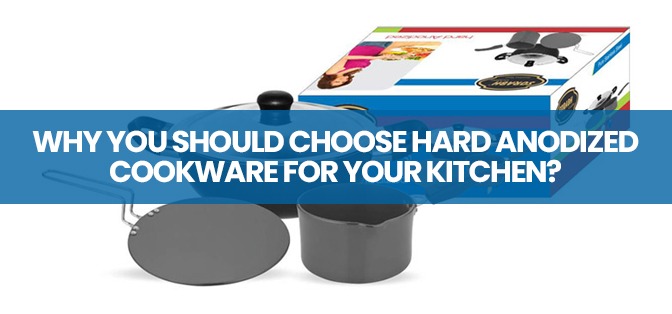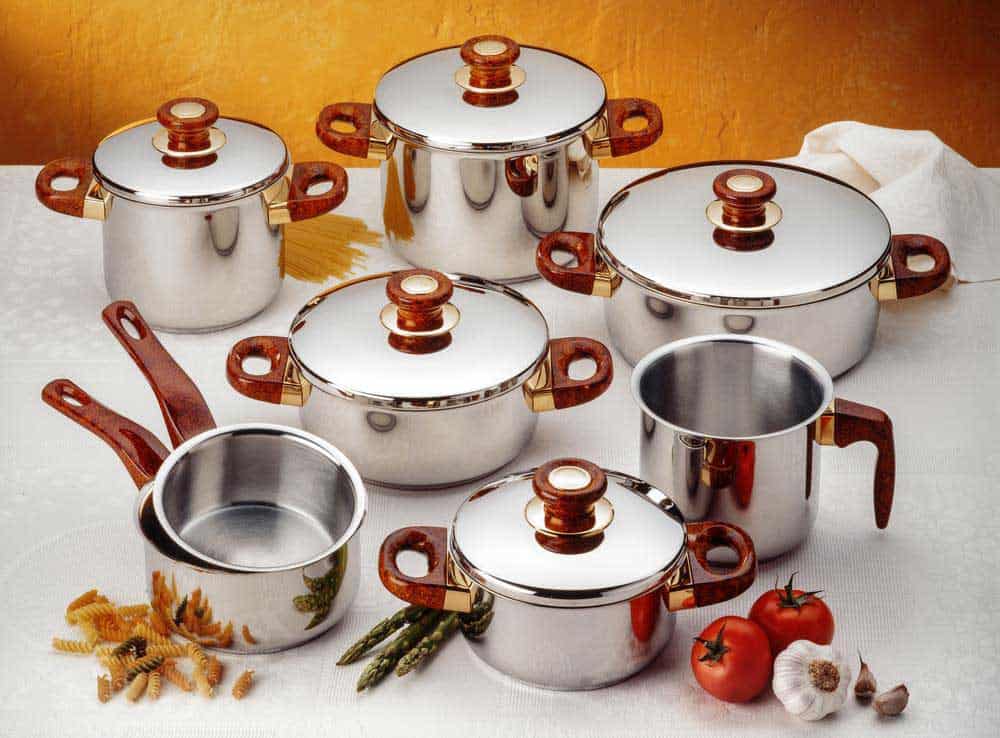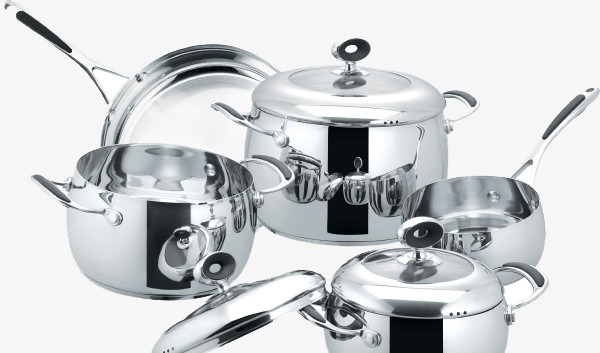
The hard anodised aluminium is used in a different type of cookware. Anodised cookwares are very popular around the world because of their durability, lightweight and inexpensive cookware. Before Aluminium ionisation, the normal aluminium cookware was used in the kitchen but the manufacturer found that aluminium is soft and can react with acidic food.
To avoid such an issue, the manufacture anodised the layer in order to make the layer of aluminium oxide thicker. This process turns the aluminium stronger and non-reactive to the foods. Many experts called this process ‘passivation’ which means the layering of thick coating that makes the aluminium cookware protective and non-sticky.
Hard-Anodized Aluminium Cookware Pros and Cons
Pros
- The hard anodised aluminium is an excellent conductor of heat. So, while cooking, it spreads heat uniformly and perfectly.
- It’s very light and easy to handle.
- Suitable to handle any metal utensils.
- The cookware comes with a layer of non-stick coating that protects the foods from sticking.
- Compare to the other usual cookware metal, it’s most affordable.
- Due to its anodised property, its non-stick surface does not react with foods.
- Its sleek surface makes it easy to clean.
- It is safe for the use of the oven.
Cons
- Not suitable for cooking with high heat.
- Cheap quality aluminium cookware could percolate metal into foods that could be harmful to health.
- The high quality and grade aluminium cookware are a little more expensive.
- Hard dishwashers could damage their non-sticky surface.
- Even though it’s light in weight but the chemical coating makes it heavier.
Is hard-anodized non-stick cookware safe?
Due to some of its concerns that could be harmful to health, many people often uncomfortable using this cookware. However, there is not any scientific proof or research that shows anodised aluminium is not safe for health.
But some cheap grade aluminium cookware that doesn’t have anodised aluminium can react with foods and make it toxic. In fact, a good and high grade anodised aluminium cookware would be perfectly good for a cooking meal. The coated cookware with hard anodised aluminium does not allow the aluminium to leach into the foods.
Even though, FDA Reports also proves that the hard-anodized aluminium cookware is not harmful to health and it’s the safest and healthier option for cooking your food. Evoke the inner chef in you and cook healthy, low fat and delicious meals at home.
Conclusion
The above information gives you a rational idea about the safety of anodized aluminum cookware and the FDA also gives it the clean sheet for cooking. Despite any negative effects, this kind of cookware comes with prominent features. So, if you want to enhance your cooking and dining experience with the popular hard anodized cookware manufacturer Saurabh Steel.








